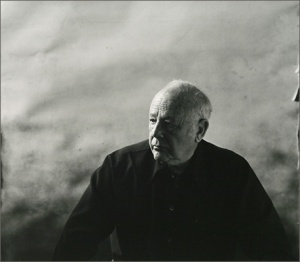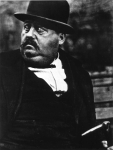“Figure out what you want to say about life, than make it work in a rectangular box.” – Paul Strand
Paul Strand was born in New York on October 16, 1890.  Growing up as an only child he found a love for photography. He was trained by the documentarian photographer Lewis Hines in New York City. In looking at Strands early work, one would think that he was completely out of focus. However, this assumption would be incorrect; many photographers were trying to show that their medium is an art just as much as painting is an art.
Growing up as an only child he found a love for photography. He was trained by the documentarian photographer Lewis Hines in New York City. In looking at Strands early work, one would think that he was completely out of focus. However, this assumption would be incorrect; many photographers were trying to show that their medium is an art just as much as painting is an art.
After graduating, Paul became a self-employed freelance photographer trying to find his style. Much of Strand’s work was influenced by the cultured yet rather interesting Alfred Stieglitz. Knowing him since he was sixteen, Stieglitz would be brutally honest with him telling Strand to stop imitating and to find his own style. After taking what Stieglitz said to heart and looking at some of the paintings in Alfred’s 291 gallerie inspired him to try abstract photography. Strand “concluded that a subject matter alone was not enough.”He excelled at this and took it out on the streets. At the end of his experiments with abstract photography, he showed it to Stieglitz. Alfred Stieglitz was so impressed that he also changed his photographic approach of a straight or pure photographic sense. Also, the last two issues of a magazine owned and founded by Stieglitz, Camera Work featured Paul Strand’s work and his work was exhibited in the 291 gallery
In street portraits that Strand photographed, his subjects are positioned in the most candid way acting as if they did not know that they were being photographed. With the attachment of a false lens on his camera people were oblivious to the fact that their portraits were being taken. That approach allowed Paul to capture people in their everyday lives and not altering their behavior in anyway.
their portraits were being taken. That approach allowed Paul to capture people in their everyday lives and not altering their behavior in anyway.
Paul Strand was an advocate of “pure” photography. His sense of realism and unaltered yet well composed photographs shows Strand’s care and attention to his images. His work has been exhibited in many art galleries. In addition, Philadelphia Museum of Art has displayed Paul Strand’s work in a retrospective. His work has been used to teach younger generations what straight photography is all about.
During his last days, before he was confined to his bed, he spent most of his time out around his home in France photographing his garden. On March 31, 1976 at his home in France Strand passed away. In his 85 years of life he had been photographing for nearly three quarters of a century. Paul Strand was one of the great photographers. He believed that photography was a statement about life and nature. He used to say “figure out what you want to say about life, than make it work in a rectangular box.” Strand escorted in the era of modernism photography. Today, many photographers try to make “their rectangle boxes” talk like Paul Strand’s did. Though, many are finding that it is hard to master it like Strand, the father of straight photography.
